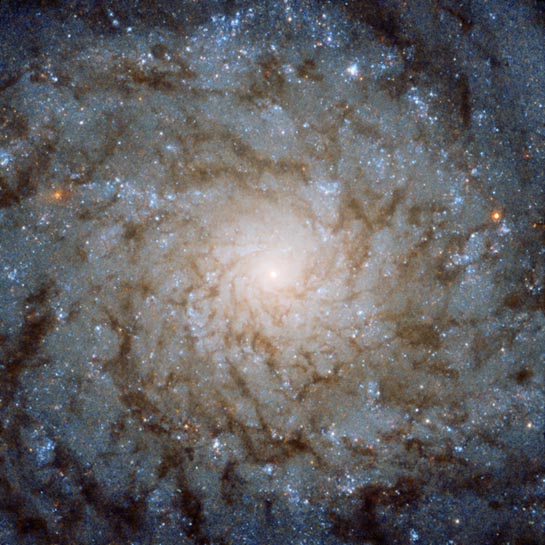
Spiral Galaxy
RA 12h 47m 45.57s Dec 13° 45' 46.06"
Coma Berenices
54 million light-years
11.6
4.3 x 3.5 arcmin
0.68 x 0.64 arcminutes
North is 73.6° right of vertical
ESA/Hubble & NASA
February 17, 2020
ABOUT
THIS IMAGE:
The NASA/ESA Hubble Space Telescope is no stranger to spiral galaxies. The telescope has brought us some of the most beautiful images ever taken of our spiral neighbors — and this picture, which features a galaxy known as NGC 4689, is no exception.
However, seen almost face on, NGC 4689 appears less like a majestic spiral and more like a smudged fingerprint on the sky. No matter how good the image quality, there is little contrast between the spiraling arms of stars, gas, and dust, and the less dense areas in between. This is because NGC 4689 is something known as an “anemic galaxy”, a galaxy that contains only quite small quantities of the raw materials needed to produce stars. This means that star formation is quelled in NGC 4689, and the pinwheeling, bustling arms are less bright than those belonging to other Hubble muses.
Despite this subtlety when compared to its brash, spotlight-stealing relatives, NGC 4689 retains an otherworldly charm, its delicately glowing material standing out subtly from the surrounding darkness of space.
From Wikipedia:
NGC 4689 is a spiral galaxy located about 54 million light-years away in the constellation of Coma Berenices. NGC 4689 is also classified as a LINER galaxy. NGC 4689 is inclined at an angle of about 36° which means that the galaxy is seen almost face-on to the Earth's line of sight. NGC 4689 was discovered by astronomer William Herschel on April 12, 1784. The galaxy is a member of the Virgo Cluster.
NGC 4689 has ring-like feature in its inner regions. Surrounding the inner ring lies a zone of bright, flocculent spiral structure with a ring-like boundary. Outside this zone is a well-defined, diffuse outer ring which is an unusual feature for a late-type galaxy like NGC 4689.
The star forming disk in NGC 4689 has been truncated which means that the amount of star formation has been reduced significantly. This truncation may have been caused by an interaction with intracluster medium of the Virgo Cluster causing the galaxy to lose much of its interstellar medium in an effect known as ram-pressure stripping. Due to its reduced amount of star formation, NGC 4689 has been classified as an Anemic galaxy.